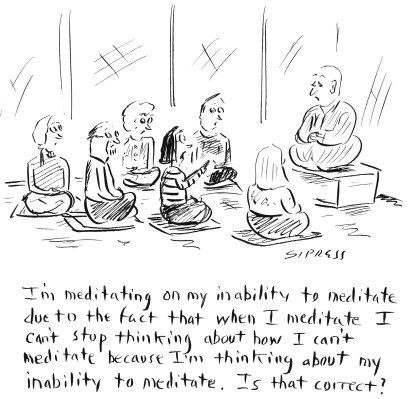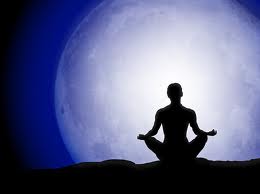This is an article I copied from someone’s blog. This article is a great example of how meditation is taught.
Meditation is an ancient technique, and its main purpose was to gain insight into life, into nature, into how the world works through going withing and upwards.
It wasn’t practiced to get healthy, to get exercise, to calm down, to deal with stress. The mindset that you want something and use meditation to get it firmly anchors you in the horizontal plane, where your wants and your likes and dislikes live.
Real meditation is to get you to the vertical plane, where your wants, likes and dislikes are just noise. Where you don’t need anything, because you live in the domain of being, the domain of Human Being.
That doesn’t mean you don’t do, and that doesn’t mean you don’t like or dislike. It only means: you don’t live through those likes and dislikes: you live through being, experiencing the likes and dislikes. No emotional attachment.
This is what I teach, and this is what is possible: a glorious way to live. Now, here is the “borrowed article” you wanted to read. Enjoy.
While it may be next to impossible to find a quiet place for meditation, a constant sense of tranquility is essential to recharge and relax our minds. What follows are simple meditation techniques that you can perform at your own convenience.
Try these two simple meditation techniques that you can do on your own, without the help of a professional or expert.
1. Vipassana: The Art of Conscious Breathing.
Considered the easiest meditation technique, Vipassana simply requires you to be ‘aware of your breathing’. This meditation technique traces its root to Gautama Buddha who follows the philosophy referred to as the “Golden Mean”. He believes that going extreme is not necessary, be it in terms of fasting or in prayer. Vipassana is the perfect type of meditation for the modern man because it can be done anywhere, at any time.
Breathing is among the most natural process in our body that we can easily be aware of. It is also considered to be the sacred link between our body and our soul.
In Vipassana, the rule is simple: just be aware of your breathing process. Do not control it, but feel your breath as the air enters your body and exits. (Vipassana should not be confused with ‘Pranayam’, a breathing exercise taught in yoga which controls breath movements.)
In meditating using the technique of Vipassana, you should simply ‘watch your breath’. Although you can do this anywhere, it is highly advised that you set a specific time and place to undergo this meditation daily.
2. Mantra Meditation: A Process of Positive Reinforcement.
Feeding our minds with optimistic thoughts does eventually lead to positive results. Mantras are words or phrases that you chant, act as the focal point for the meditation. It has been used as early as the time before the popularity and rise of Buddhism. It is considered to be an ancient meditation technique and is also among the most popular because it transcends time, culture and race.
The practice of mantra meditation requires you to repeat a sentence or a set of words. It should have a phonetic significance, something that’s easy to remember.
Similar to Vipassana Meditation, meditating using a mantra can be done anywhere, but it is best done as soon as you wake up. Prepare a set of words that you’ll recite, (out loud or to yourself), the moment you open your eyes. Listen to the sound of each word and internalize.
A good and steady practice of meditation will help you to improve your sense of being. By simply allotting a couple of minutes in your day to meditate, you will experience greater peace and connection to your life’s purpose, and gradually uncover your full human potential.
Article Source:
 I sometimes participate in Quora, by answering questions. I like to be challenged, it is the spice of life, and I enjoy being forced to think, solve problems, get out of my little box.
I sometimes participate in Quora, by answering questions. I like to be challenged, it is the spice of life, and I enjoy being forced to think, solve problems, get out of my little box.
